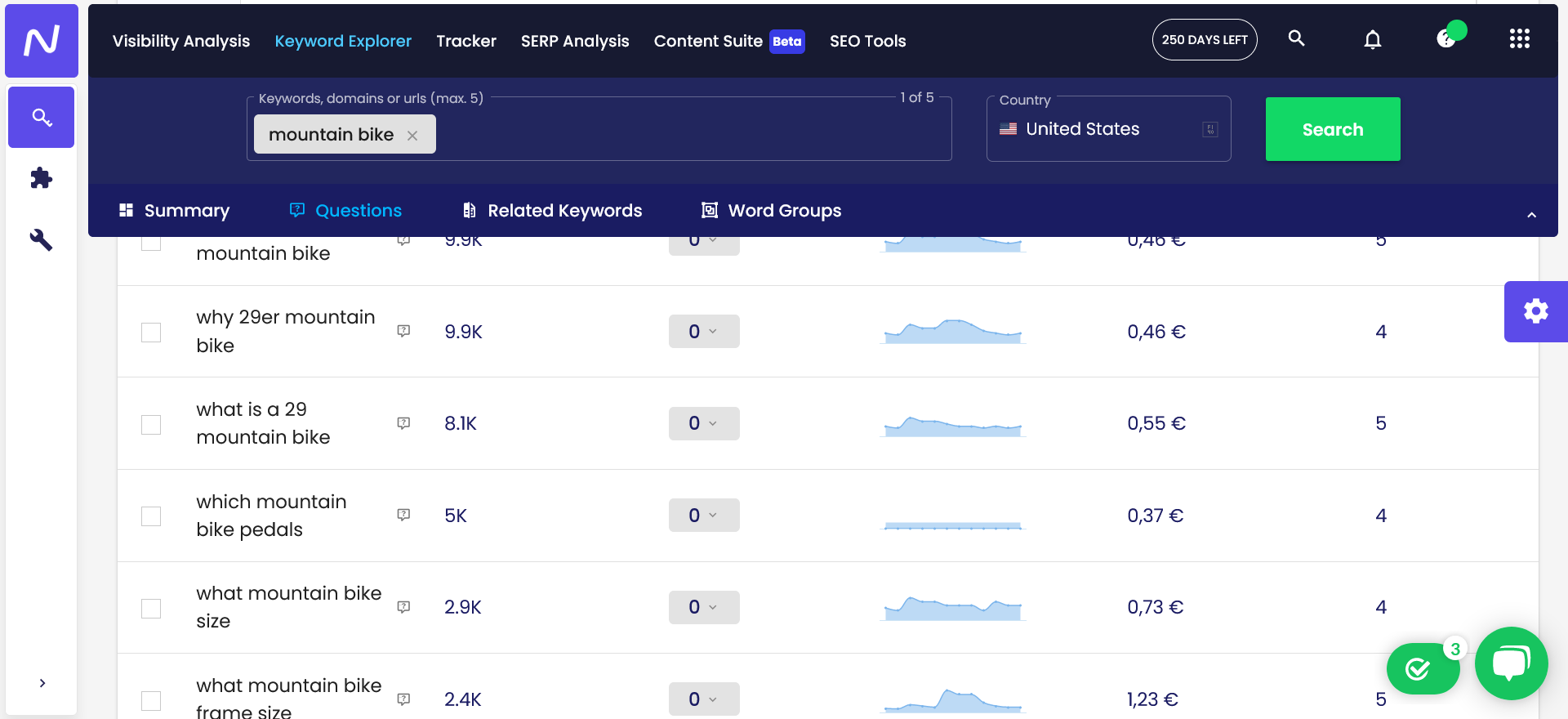Anchor texts are one of the fundamental issues not only in SEO, but generally in creating and publishing content online. The relevance of anchor texts had already been written about by Google’s co-founders in a project document for what was later to become the world’s largest web search engine. What are anchors, how do you use them and what importance do they have for SEO? Let’s go through these issues one by one.
What is an anchor text
What does anchor mean? If you open up an English dictionary it will show that an anchor is a heavy metal object used by ships and boats. In our context, we are talking about something a little bit different, but the association with a ship anchor is quite on point.
An anchor text is a piece of text that we can click on and be taken to a certain page. An anchor therefore anchors two locations on the internet between each other – either within one site or two different sites.
Anchors are a hint to Google of what your website is about. So it’ s best to have a set of keywords on hand upon which your site is already visible, and those on which your competitors are visible – and your site is not yet. This will show you both what material you should publish on your site, as well as which anchor texts to create (for internal linking) and from which anchors to acquire links (for external linking).
You will recognise an anchor by the fact that it will usually be a blue underlined piece of text. This is still the most common form, although some web developers use a different colour and/or abandon underlining.
The colours and styles of the links can be modified on the page using HTML or CSS.
Types of anchor texts
According to some sources, there are up to a dozen types of anchor texts. Here I will list five of the most popular in my opinion:
Exact match, or sales anchor. It contains an exactly matching keyword phrase, without any additional words. For example: CBD oils.
Partial match – it may link to the same place, but it will no longer be a ‘pure’ phrase, instead, for example, with an additional incentive to click: Buy CBD oils here.
Zero match – no specific phrase was used. It is still quite common to come across such anchors, although SEO specialists are unlikely to recommend using them. Example: to go to the shop click here.
A brand anchor incorporates the brand name – for example, Mesh CBD.
A long tail anchor contains a very specific and relatively long phrase. This type of anchor is often used when linking to articles, for example: How to create an effective content plan? (links to an article on the Senuto blog on this topic)
An anchor can appear not only as text, but also as an image. That banner you clicked on recently which took you to another page was also an anchor. In this article, however, I am focusing on anchor texts, so when I write anchor – know that I mean anchor text.
Why insert anchor texts?
Firstly, it is for the sake of the readers of the content on our website.
Anchor texts have an aesthetic and functional role. It’s a matter of good style to invite the user to visit the blog subpage using an anchor, rather than writing: “To go to the blog subpage, click the link: https://www.senuto.com/en/blog/”.
An anchor text generally looks much better than a raw link (so-called naked anchor) and does not spoil the flow of reading.
Anchors, when they do not have a sales function, mostly refer to sources of knowledge in order to expand information on a given topic.
For example, we have a text on the blog explaining the basics of SEO. An extract from this text is as follows:
“SEO is a complex process that involves many factors. One of the most important elements of SEO is the right choice of keywords.”
In this extract, the phrase ‘keywords’ is the anchor text and leads to the article “Keywords in SEO – where to find them and how to choose them?”.
It is not difficult to see the value for the reader here: someone who reads an article on SEO basics can open the text on keywords in a new tab for themselves to read later – because the two topics are strongly linked.
Secondly, with Google in mind.
Anchor texts have a significant impact on Google’s SEO. Why? Because, as a rule, a link is anchored in every anchor. Links, in turn, are crucial for positioning. Thanks to links, the internet is essentially what it is: a network of information; a network woven precisely from links.
By linking appropriately, we develop the network. If we develop the network, the search engine rankings – of our site or the sites we link to – increase. That’s it in a nutshell. More on the importance of anchor texts in positioning (SEO) in a moment.
How to add an anchor text in HTML
If you don’t know HTML, but you want to be able to do one thing in this coding language, let that thing be creating anchor texts. It’s very simple, and it comes in handy in all sorts of situations.
How to insert an anchor text? The general formula is as follows:
<a href=”this is where you add the link to the website”>And here is the text that is supposed to link, i.e. be an anchor</a>
For example:
<a href=”https://en.wikipedia.org/wiki/Marcin_Garuch”>the shortest professional footballer in Europe</a>
The phrase ‘the shortest professional footballer in Europe’ is the anchor text here, which – once published on the site – will be clickable and will take you to another page. In this case to Wikipedia, but we could just as well use a link to, for example, the footballer’s profile on Instagram.
Always remember to open <a> and close </a> tags between which you place a hyperlink. Don’t lose the quotation marks.
The importance of anchor texts in positioning
Do anchors matter in SEO? In short: yes. At this point, it is best to quote from a document written a century ago by Sergey Brin and Lawrence Page, co-founders of Google, when the search engine was still in its draft stage:
Linked text is treated specially in our search engine. Most search engines associate the link text with the page on which the link is located. We additionally associate it with the page to which the link points.
Since Google’s inception, the above mentioned general principle has remained unchanged. However, improvements are constantly being made to how anchor texts affect positioning.
Along with this, the rules for the correct use of anchors are changing.
In 2012, Google introduced the Penguin update, which largely cut down on the misuse of links (therefore anchors) by page builders and consequently the simple manipulation of page positions in the search engine.
Another breakthrough was Google’s introduction of the BERT update in 2019, which uses NLP scripts, or natural language processing. It can be said that with this update, the internet has moved closer to the vision of the semantic web, where algorithms can read the meaning of content and associate it contextually even more effectively.
This forces publishers and content creators to be more careful and precise in creating anchors – as they also help the algorithms understand what the page is about.
At stake, among other things, is the trust that Google will place in such a site.
SEO principles of using anchor texts
It is worth consulting your SEO specialist or agency on the use of anchor texts, because – no surprise – every case is a little different and the best solutions are those that are tailor-made. However, I will give you three general rules that will be useful to you regardless of your industry or type of site.
Think about the phrases you want to position yourself for
This is a basic and probably the simplest rule for anchor texts: create anchor texts based on the keywords you want to position yourself for in a search engine.
You can check the keywords for your site and your competitors’ sites in the Senuto application. Use the Visibility Analysis and Keyword Explorer modules.

Be precise and think of the user
It is not about precision in the sense of: use as many words as possible in the anchor text to describe exactly where the link leads. No. Rather, it is about making sure the anchor text hits the point. Look at the text through the eyes of the reader. Does the anchor text make sense? Will it lead the reader roughly where I think it will lead?
Create anchors with the user’s needs in mind – because, at the end of the day, that’s also what Google’s algorithms are designed to do. If you are mindful of the context in which the anchor is placed, and ensure that it is woven naturally into the content of the page, you are already ahead.
Take care of anchors in internal links
Anchors can lead either to other owners’ sites (external links) or simply to another subpage within your site (internal links).
It is quite common for web developers to sometimes make the mistake of focusing entirely on external links, while ignoring external linking. The potential in it is enormous.
When creating an internal link network, pay particular attention to long tail anchors – i.e. anchors that link to a specific query and answer. So link not only to and from products or categories on your website, but also to and from articles on your company blog. In this way, you will build their visibility.
Anchor texts as part of a linking strategy
Creating anchor texts is an element of positioning and, more precisely, part of a linking strategy, which in turn is crucial for SEO.
You already know the theory and basic principles of anchor texts. The next step will be to familiarise yourself with the principals of internal linking and link building.
So much for the briefing. May the anchors be with you.
 Wojciech Maroszek
Wojciech Maroszek